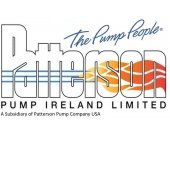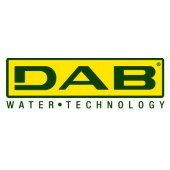Pump Working Pressure
Pumps require, in order to ensure trouble-free operation, a minimum static inlet pressure at the pump suction port, which is generally termed the minimum available net positive suction head (NPSH).
This available inlet pressure decreases with the flow through the pump on account of the velocity change of the liquid in the suction section of the impeller. The critical location is the entry into the impeller suction neck. If the pressure then falls below the operating vapour pressure of the fluid, the fluid flashes into a vapour and forms bubbles.
The ensuing flow through the impeller leads to a hydraulic pressure build-up. Within this region the bubbles collapse or implode with a tremendous shock on the adjacent surfaces causing vibration and even destruction in the form of pitting or erosion. This process, termed Cavitation, is accompanied by a low rumbling or sharp rattling noise with rising intensity as cavitation increases.
Parallel to its destructive power cavitation also causes a loss in pumping performance due to the fact that the pump is now handling a water/gas mixture. A minimum static inlet pressure must thus be ensured at the pump suction port in order to avoid cavitation.
The level of this required pressure depends on:
- the temperature of pumped liquid
- the required net positive suction head (termed NPSHr) corresponding to the pump duty point.
The net positive suction head required for a smaller size (Glandless Pumps) pump, for typical temperature ranges, can be determined from data charts provided within our literature. These can be applied directly and without the need to calculate the required minimum inlet pressure.
Larger pumps (Glanded Pumps) require accurate calculation relating to the duty point and fluid temperature.
The required net positive suction head (NPSHr) relates specifically to the pump and is normally depicted by pump manufacturers as an NPSH curve in the pump duty chart.
Generally a correlation between pump speed and NPSHr is evident. For pumps of similar type
High speed = High NPSHr
Low speed = Low NPSHr
It is recommended practice to raise these levels by a safety margin of 0.5m to compensate for possible uncertainties on duty point calculations when selecting the pump.
General standards allow a minimum level of cavitation at the determined NPSHr which
- reduces the Pumping Head at the duty point by 3% or less.
- does not cause any material destruction impeding function or service life.
Such acceptable levels of cavitation may however already cause unacceptable noise.
To be fully on the safe side, it is common practice to load the NPSH available calculation with a safety margin of approx. +5 to +20m, depending on the speed and of the pump.
Related topics
Back to Resources

2.jpg&w=170&h=170)

1.png&w=170&h=170)
3.png&w=170&h=170)






